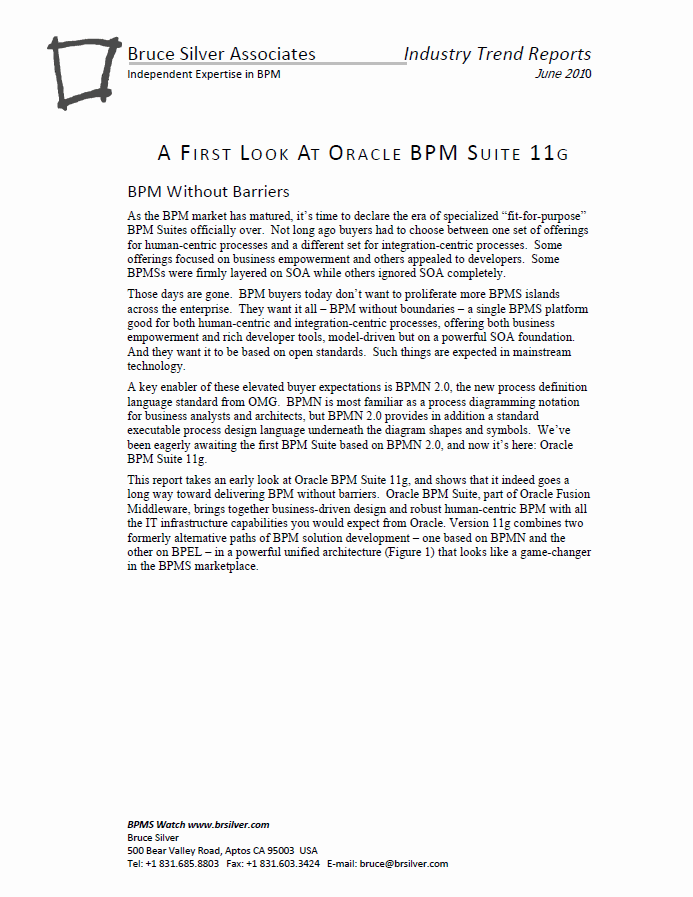As the BPM market has matured, it’s time to declare the era of specialized “fit-for-purpose” BPM Suites officially over. Not long ago buyers had to choose between one set of offerings for human-centric processes and a different set for integration-centric processes. Some offerings focused on business empowerment and others appealed to developers. Some BPMSs were firmly layered on SOA while others ignored SOA completely. Those days are gone. BPM buyers today don’t want to proliferate more BPMS islands across the enterprise. They want it all – BPM without boundaries – a single BPMS platform good for both human-centric and integration-centric processes, offering both business empowerment and rich developer tools, model-driven but on a powerful SOA foundation. And they want it to be based on open standards. Such things are expected in mainstream technology.
A key enabler of these elevated buyer expectations is BPMN 2.0, the new process definition language standard from OMG. BPMN is most familiar as a process diagramming notation for business analysts and architects, but BPMN 2.0 provides in addition a standard executable process design language underneath the diagram shapes and symbols. We’ve been eagerly awaiting the first BPM Suite based on BPMN 2.0, and now it’s here: Oracle BPM Suite 11g.This report takes an early look at Oracle BPM Suite 11g, and shows that it indeed goes a long way toward delivering BPM without barriers. Oracle BPM Suite, part of Oracle Fusion Middleware, brings together business-driven design and robust human-centric BPM with all the IT infrastructure capabilities you would expect from Oracle. Version 11g combines two formerly alternative paths of BPM solution development – one based on BPMN and the other on BPEL – in a powerful unified architecture (Figure 1) that looks like a game-changer in the BPMS marketplace.

















